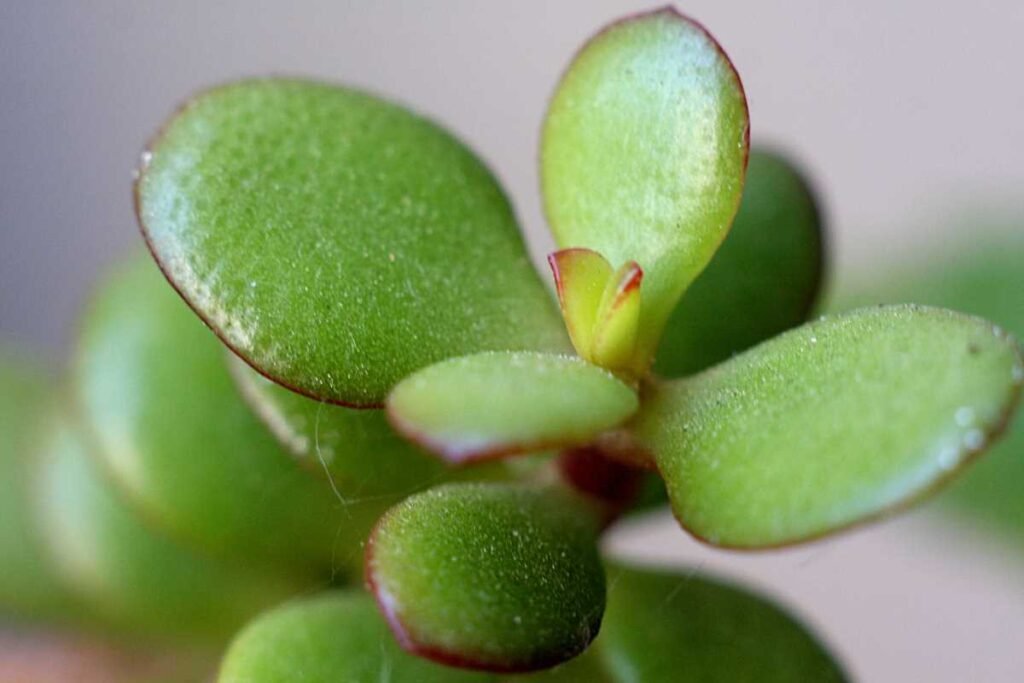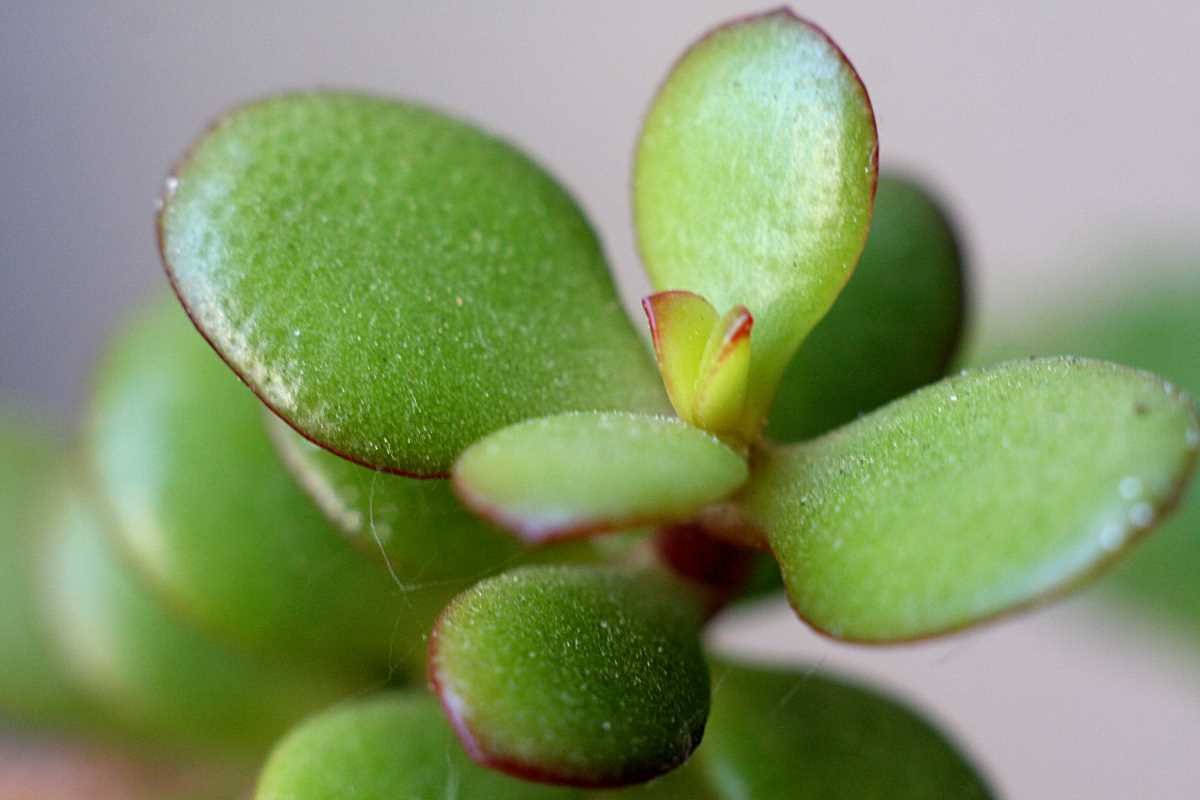Jade plants, also known as Crassula ovata, are loved for their beauty and simplicity. With their glossy leaves and sturdy stems, they bring a sense of calm to any room. But these plants aren’t just pretty to look at. They may also offer some surprising benefits.
Let’s explore how jade plants can make your indoor space healthier and more inviting. These plants have small, shiny leaves and a unique, tree-like structure. They are easy to care for, making them a popular choice for homes and offices.
Many people wonder if jade plants also help clean the air. Can they purify the air in your home? Let’s explore this idea in depth.

Table of Contents
What Are Jade Plants?
Jade plants are succulents. This means they store water in their thick, fleshy leaves. They come from South Africa, where they thrive in dry, sunny climates.
Over time, jade plants have spread across the world. They’ve become a favorite for plant lovers because they’re hardy and forgiving.
In some cultures, jade plants are called “money plants” or “friendship plants.” They are said to bring good fortune and positive energy. Their beauty is undeniable, but can they do more than decorate a space? Can they also purify the air?
How Do Plants Purify Air?
To understand whether jade plants can purify air, let’s first look at how plants improve air quality. Plants are natural air filters. They take in carbon dioxide and release oxygen during photosynthesis. This exchange refreshes the air in enclosed spaces.
Some plants go a step further. They can absorb harmful chemicals from the air. This process is called phytoremediation. Certain plants remove toxins like benzene, formaldehyde, and ammonia. These chemicals come from everyday items like paint, furniture, and cleaning products.
NASA’s Clean Air Study in the 1980s showed how some plants improve air quality indoors. This study highlighted plants like the peace lily and snake plant. Unfortunately, jade plants were not included in this research. Does this mean they don’t purify air? Not necessarily.
Do Jade Plants Purify Air?
The simple answer is that we don’t know for sure. Jade plants haven’t been scientifically proven to remove toxins from the air. However, as living plants, they still offer several benefits. Here’s how they contribute:
- Oxygen Production: Like all plants, jade plants absorb carbon dioxide and release oxygen. This process refreshes the air and supports better breathing.
- Moisture Release: Jade plants release water vapor through a process called transpiration. This adds moisture to the air, which can be helpful in dry environments. Proper humidity levels reduce dryness in your skin, nose, and throat.
- Dust Trapping: The smooth, waxy leaves of jade plants can collect dust. This reduces the amount of dust floating in the air, making your space feel cleaner.
Although these benefits are real, they aren’t unique to jade plants. Most indoor plants provide similar advantages. Without direct evidence, it’s hard to say if jade plants are particularly effective at purifying air.
Indirect Benefits of Jade Plants
Even if jade plants aren’t proven air purifiers, they still have many benefits. Here’s why you might want one in your home:
- Stress Relief: Being around plants can lower stress levels. Their green leaves and natural beauty create a calming environment. Studies have shown that caring for plants can improve mental well-being.
- Improved Focus: Plants like jade can boost concentration. They make your space more enjoyable, which helps you focus on tasks. Adding greenery to your workspace can enhance productivity.
- Aesthetic Appeal: Jade plants are visually stunning. Their unique shape and shiny leaves add charm to any room. They fit well with various interior designs.
- Symbolic Value: Many people believe jade plants bring good luck. This belief can create a sense of positivity and hope in your home. Whether it’s true or not, this symbolic value makes them special.
Also read: Jade Plant Disadvantages: Everything You Have to Know.
Caring for Jade Plants
To enjoy the benefits of jade plants, you need to take care of them properly. Fortunately, jade plants are easy to maintain. Here are some tips:
- Light: Jade plants love bright, indirect sunlight. Place them near a window where they can get plenty of light without direct exposure.
- Water: Water your jade plant sparingly. Let the soil dry out completely before watering again. Overwatering can cause root rot, which can kill the plant.
- Soil: Use well-draining soil. A mix designed for succulents or cacti works best. Good drainage prevents water from sitting around the roots.
- Temperature: Keep jade plants in temperatures between 60°F and 75°F (15°C to 24°C). Avoid exposing them to frost or extreme cold.
- Pruning: Trim your jade plant to keep it healthy and maintain its shape. Pruning encourages new growth and prevents it from becoming too large.
- Pest Control: Watch for pests like mealybugs or spider mites. Clean the leaves with a damp cloth to keep them pest-free.
Other Air-Purifying Plants to Consider
If you’re looking for plants proven to clean the air, here are some options. In addition, these plants can complement jade plants, offering a well-rounded approach to indoor air purification:
- Snake Plant (Sansevieria): Known for its ability to remove toxins like benzene and formaldehyde, the snake plant is hardy and low-maintenance.
- Peace Lily (Spathiphyllum): This plant has beautiful white flowers and can filter harmful chemicals from the air.
- Spider Plant (Chlorophytum comosum): Easy to grow and effective at removing carbon monoxide and formaldehyde.
- Areca Palm (Dypsis lutescens): A great choice for increasing indoor humidity and removing toxins.
- Aloe Vera: Known for its soothing gel, aloe vera also cleans the air and adds charm to your space.
Combining these plants with jade plants can create a cleaner and more vibrant indoor environment.
Related FAQs:
1. Can jade plants purify the air in my home?
While jade plants are not scientifically proven to remove toxins like some other houseplants, they still contribute to better air quality by producing oxygen, releasing moisture through transpiration, and trapping dust. These benefits make them a valuable addition to indoor spaces.
2. Are jade plants included in NASA’s Clean Air Study?
No, jade plants were not part of NASA’s Clean Air Study, which focused on specific plants known for their air-purifying abilities, such as snake plants and peace lilies. However, jade plants still provide indirect air-quality benefits.
3. How do jade plants improve air quality?
Jade plants improve air quality by:
- Producing oxygen during photosynthesis.
- Releasing moisture into the air, which can help maintain healthy humidity levels.
- Collecting dust on their smooth leaves, reducing airborne particles.
4. Do jade plants remove harmful chemicals from the air?
There is no direct evidence that jade plants remove harmful chemicals like benzene or formaldehyde. If you’re looking for plants specifically known for this ability, consider options like snake plants, peace lilies, or spider plants.
5. Are there other benefits to having a jade plant indoors?
Yes! Beyond potential air-quality improvements, jade plants offer:
- Stress relief and mental well-being through their calming presence.
- Aesthetic appeal with their glossy leaves and tree-like structure.
- Symbolic value, as they are often associated with good luck and prosperity.
6. Are jade plants easy to care for?
Yes, jade plants are low-maintenance and perfect for beginners. They thrive in bright, indirect light, require infrequent watering, and prefer well-draining soil. Avoid overwatering, as it can lead to root rot.
7. Can jade plants help with dry indoor air?
Yes, jade plants release moisture into the air through transpiration, which can slightly increase humidity levels. This makes them helpful in dry environments, though their effect is less significant compared to humidifiers or plants like the areca palm.
8. What other plants should I pair with jade plants for better air purification?
For a more comprehensive approach to air purification, consider pairing jade plants with:
- Snake Plant (Sansevieria)
- Peace Lily (Spathiphyllum)
- Spider Plant (Chlorophytum comosum)
- Aloe Vera
- Areca Palm (Dypsis lutescens)
9. Do jade plants have any disadvantages?
While jade plants are generally beneficial, they can be toxic to pets if ingested. Additionally, they may not be as effective at air purification as other plants specifically studied for this purpose.
10. Can jade plants improve focus and productivity?
Yes, studies suggest that having plants like jade in your workspace can boost concentration and productivity by creating a more pleasant and calming environment.
11. Are jade plants suitable for all climates?
Jade plants thrive best in warm, dry climates similar to their native South African habitat. They prefer temperatures between 60°F and 75°F (15°C to 24°C) and should be protected from frost or extreme cold.
12. How often should I water my jade plant?
Water your jade plant sparingly, allowing the soil to dry out completely between waterings. Overwatering is the most common cause of problems, so err on the side of caution.
Conclusion
Jade plants may not have direct scientific proof as air purifiers, but they still offer many benefits. They produce oxygen, add moisture to the air, and trap dust. These qualities make them a valuable addition to any home or office.
Beyond their practical uses, jade plants bring beauty and positivity. Their symbolic value and calming presence enhance emotional well-being. If you’re looking for a low-maintenance plant that brightens your space, jade plants are an excellent choice.
For the best results, pair jade plants with other air-purifying plants. Together, they can create a healthier, more pleasant indoor environment. Ultimately, adding greenery to your space is a simple way to improve your quality of life.

